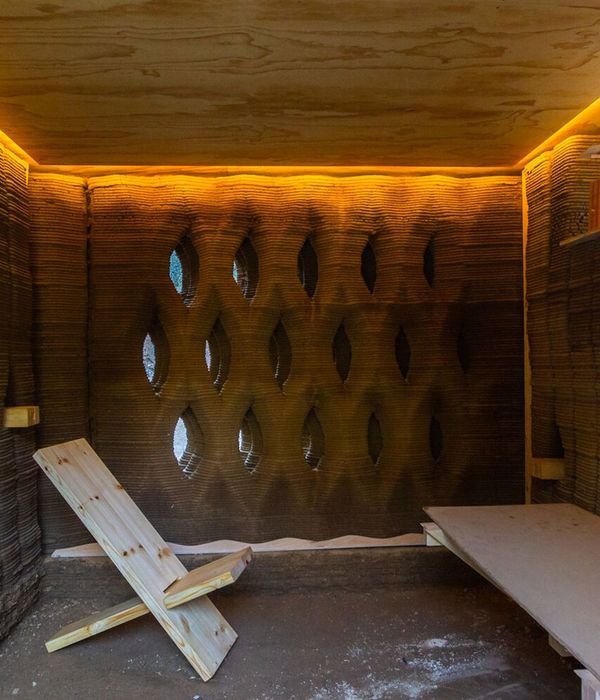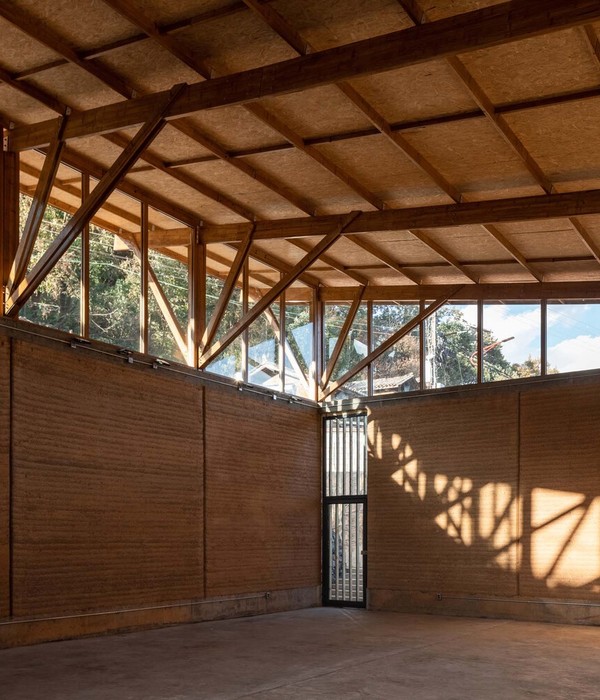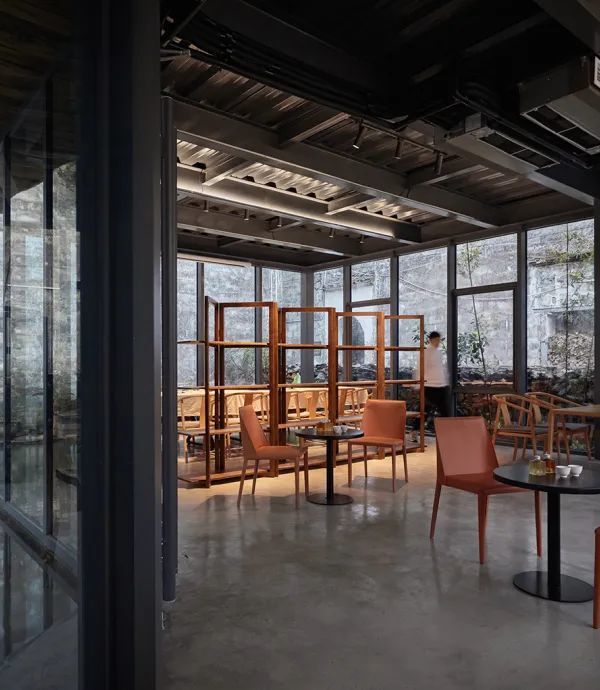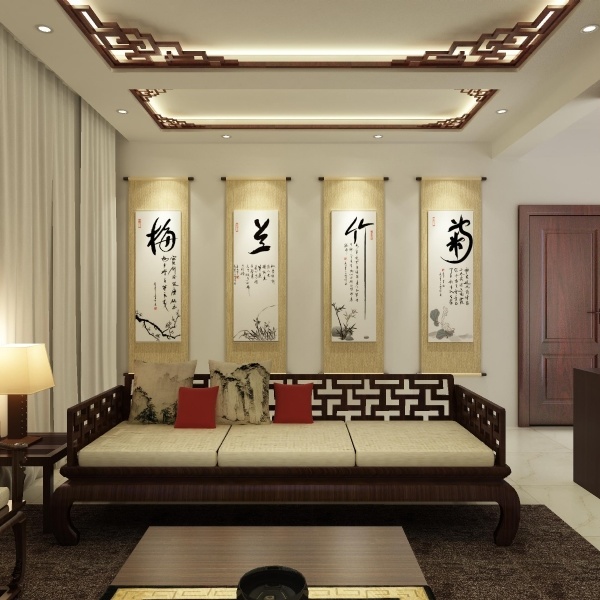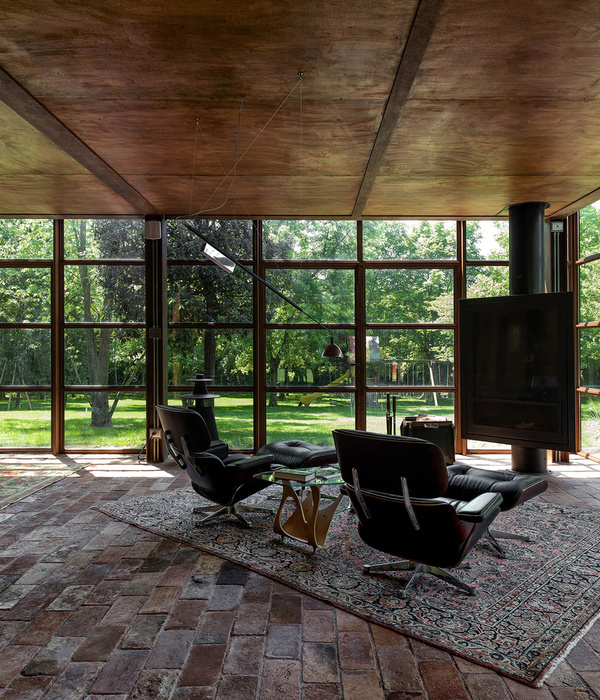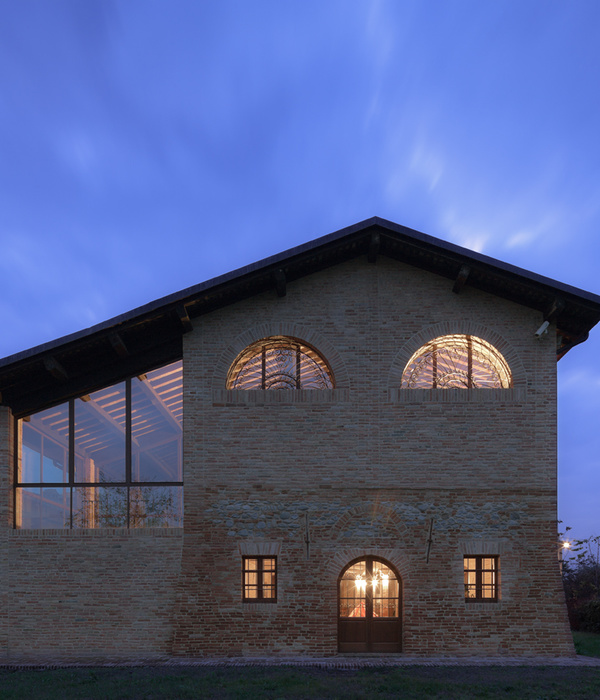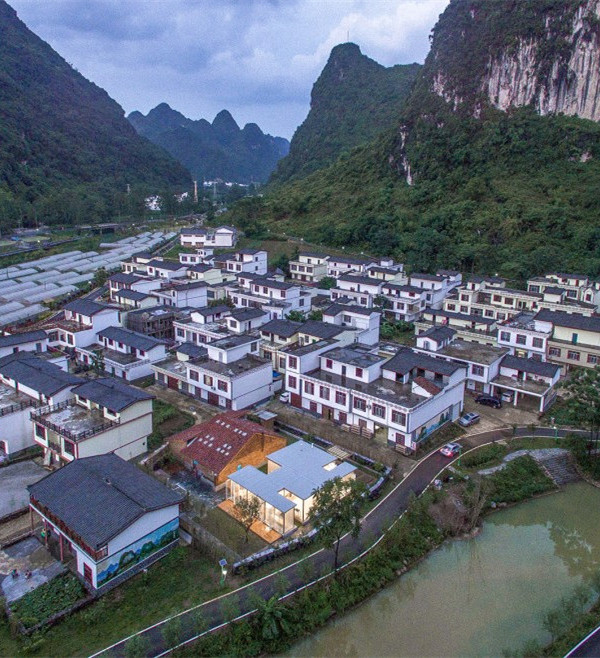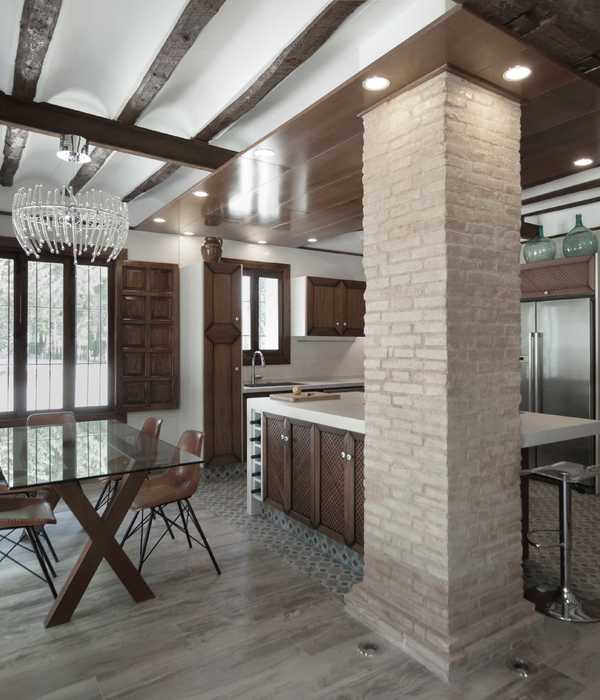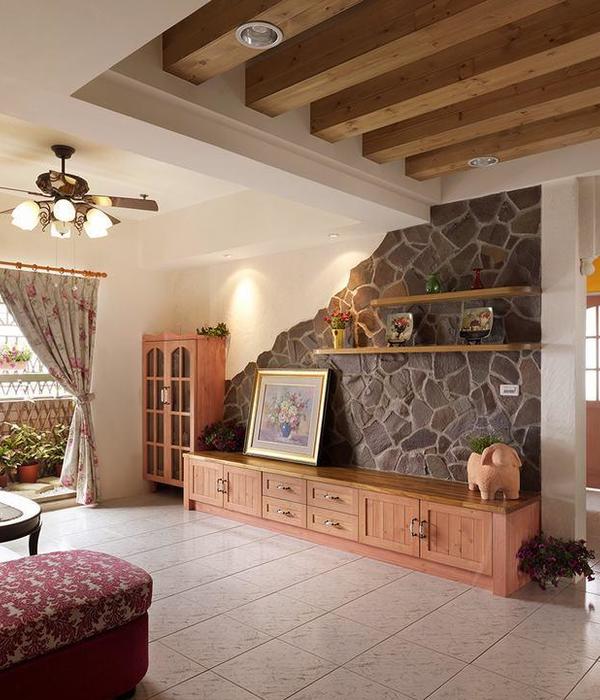该项目位于奥索纳的塞瓦村,毗邻蒙塞尼自然公园。该地块由两条街道界定,其特点是呈三角形、有良好的朝向和陡峭的坡度。
The project is located in Seva, a village in Osona next to the Montseny natural park. The lot, delimited by two streets, is characterized by its triangular shape, good orientation and a lot of slope.
▼建筑概览,Overall view of the building © Adrià Goula
▼从山坡上望向建筑,Viewing the building from slope © Adrià Goula
▼与环境相融的开放空间 Open space in harmony with the environment © Adrià Goula
客户要求我们提供一栋房子,它拥有温暖、私密、面向花园的空间且能源需求较低。
The clients asked us for a house in which to live in warm, intimate spaces, open to the garden and with low energy demand.
▼红砖建构的建筑立面肌理,Red brick facade texture © Adrià Goula
▼立面局部,Detail of the facade © Adrià Goula
▼巧妙的开放空间采光,Interesting skylight in the open space © Adrià Goula
为了满足客户的需求,该项目基于两种策略。第一个是将房屋放置在地块较高且平坦的部分,将通往北部的通道定位并消除不必要的土方工程。
In order to satisfy the demands of the clients, the project is based on two strategies. The first of them is to place the house on the high and flat part of the plot, locating the access to the north and eliminating unnecessary earthworks.
▼夜间立面,Night view of the facade © Adrià Goula
▼夜间入口,Night view of the entrance © Adrià Goula
第二个策略是创建一个结构和建设系统,使得能够创建一个透明的空间,在其中设置房屋的主要部分,但同时,与位于场地北侧附近的房屋产生密切但不造成干扰的关系。
The second strategy has been to create a structural and constructive system that makes it possible to create a diaphanous space in which to place the main parts of the house but, at the same time, to generate intimacy with respect to the neighbouring houses located on the upper street, to the north of the plot.
▼夜间公共空间,Night view of the open space © Adrià Goula
为了实现这些目标,我们创建了一个木制门廊结构系统,以产生两个不同的空间:位于平屋顶下的北部潮湿和封闭的空间,以及位于倾斜屋顶上的额外空间。倾斜的门廊调节出一个透明的空间,我们依次布置了门廊、客厅、餐厅、厨房和卧室。所有客房均朝南并面向花园,让您可以欣赏美景并享阳光。
In order to achieve these objectives, a structural system of wooden porticos has been created to generate two distinct spaces: the wet and closed spaces located to the north under a flat roof and the rest of the spaces located on an inclined roof. The inclined porches modulate a diaphanous space where we find the porch, the living room, the dining room, the kitchen and the bedrooms successively. All of them open to the south and to the garden, which allows you to enjoy the views and the solar radiation.
▼轴测分析图,Axonometric diagram © Alventosa Morell Arquitectes
为了强调支撑房屋的轻型结构,我们用陶瓷立面塑造了建筑特征,为了与邻居更加亲密,建筑只维持在窗台的高度。相反,一顶大帽子作为屋顶,木质外墙成为房子的外貌特征。这顶帽子在屋外和屋内都很引人注目。在里面,松木盖和天窗将我们与建筑立面分开。另一方面,在外面,通风的黑色木制立面和黑色瓷砖的屋顶创造了一顶帽子,似乎漂浮在陶瓷作品的顶部。
In order to emphasize the light structure that supports the house, the ceramic facades that help us to generate a massive character and more intimate with respect to the neighbours, only reach the height of the window sills. Instead, a large hat as a roof and wooden facade becomes the rest of the house’s envelope. This hat is emphasized both outside and inside the house. Inside, the pine wood cover and the skylights separate us from the construction facade. On the other hand, on the outside, a ventilated black-tinted wooden facade and the roof of black tiles create a hat that seems to float on top of the ceramic work.
▼餐厅与厨房空间概览,Overall view of the kitchen and dining room © Adrià Goula
▼良好的厨房采光,Bright kitchen space © Adrià Goula
生物气候设计基于外层结构,它有着南侧太阳能收集、夏季遮阳、高热性能和交叉通风特性(由主立面和分隔倾斜屋顶的天窗产生)使我们能够大大减少能源需求。因此,我们已经能够消除冷却系统,仅设置一个火炉就能在冬季享受足够的温暖。
The bioclimatic design based on solar capture located in the south, solar protection during the summer, the use of an envelope with high thermal performance and cross ventilation (generated from the main facade and the skylights that separate us the sloping roof of the flat roof) has allowed us to greatly reduce the energy demand. For this reason, we have been able to eliminate cooling systems and enjoy thermal comfort in winter through a single pellet stove.
▼室内能看优美的景色,Beautiful view from the interior space © Adrià Goula
为了减少与房屋建造相关的二氧化碳排放(生态足迹),我们选择了以下策略:1.- 木材作为主要元素:屋顶、窗户、室内覆盖物和外墙饰面。全部有PEFC证书。2.- 纤维素分离。3.- 用生物质烧制的陶瓷制品。4.- 保护现有树木。
In order to reduce the CO2 emissions linked to the construction of the house (ecological footprint) we have opted for the following strategies: 1.- Wood as the main element in: roof, windows, interior coverings and facade finishes. All with PEFC certificate. 2.- Cellulose isolation. 3.- Ceramic work fired with biomass. 4.- Preserve the existing trees.
▼走廊拥有良好的采光,Bright corridor spaces © Adrià Goula
▼舒适的卫生间,Cozy toilet © Adrià Goula
▼场地平面图,Site plan © Alventosa Morell Arquitectes
▼平面图,Plan © Alventosa Morell Arquitectes
▼立面图,Elevation © Alventosa Morell Arquitectes
▼长剖面图1,Long section 1 © Alventosa Morell Arquitectes
▼长剖面图2,Long section 2 © Alventosa Morell Arquitectes
▼横剖面图,Cross section © Alventosa Morell Arquitectes
▼建筑模型,Model © Alventosa Morell Arquitectes
Project name: Casa GE / GE house. Office Architecture : Alventosa Morell Arquitectes Construction completion year: 2020 Constructed area (m2): 110,80m2 Location: Osona, Catalunya. Program of needs:single-family housing Architects in charge: Marc Alventosa + Xavier Morell Photographer credits: Adrià Goula
{{item.text_origin}}

